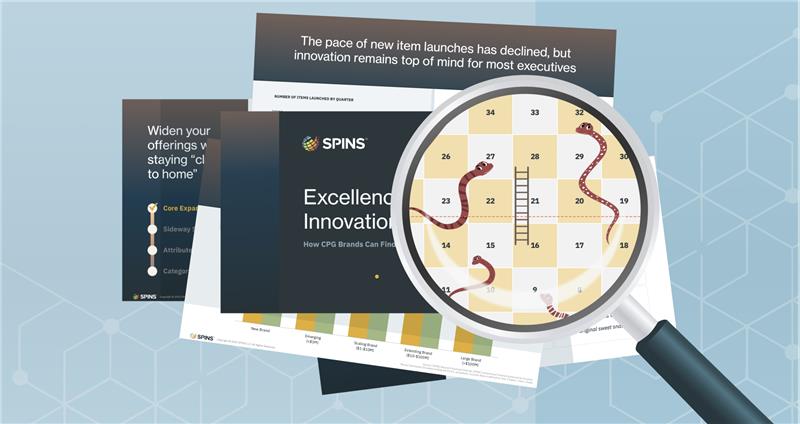Control inflation by managing trade spend
Inflation is an inescapable topic for everyone from the corner office to customers walking store aisles. No one knows how high prices will go and for how long they will remain, but we do know that they are already affecting shoppers and, consequently, your bottom line. A recent Washington Post-Schar School poll found 87% of Americans have already adjusted their spending as a result of inflation concerns; 77% have reduced spending on entertainment and eating out; and 66% expect inflation to worsen in the next year.
Shoppers are quick to notice price changes and finds ways to maximize their paychecks. They eat more meals at home, comparison shop between stores and brands, consider private label options, and look online and in store before making a purchase. When you consider how to respond to ongoing inflation effects, remember that you must take a multi-angle approach that accounts for the wealth of information shoppers have at their fingertips.
So, what can you do today?
Understand the Current Landscape
To address inflation, you first want to understand how it’s affecting your industry and your customers. Gas prices are climbing and, consequently, raising the cost of transporting products. The ongoing supply chain issues that began last year haven’t been solved, which has backed up major ports throughout the world and significantly increased delivery times for goods. For example, despite recent improvements, shipping delays are still 75% higher than they were a year ago. Meanwhile, a combination of factors has led to rising costs for food packaging.
Those rising costs are showing up on shelves, but just how much they’re rising depends on a few factors. We found that within SPINS’ total channel, the average retail price (ARP) increased 10.3% over the most recent 4 weeks. The SPINS Natural Enhanced Channel, however, experienced a 6% increase during that period. The price points between conventional and natural can differ quite a bit, so it’s not as though inflation erases all budget concerns for shoppers. It is, however, worth noticing that the gap between some items might shrink and that natural shoppers have historically remained loyal to natural products even during recessions and the pandemic.
Still, we can’t pretend that inflation isn’t already affecting shopping habits and CPG manufacturers, and retailers are beginning to resist higher prices that might turn away customers. It’s already happening, and retailers will have less reason to accept cost increase as shoppers increasingly turn to discount stores or private label. Ultimately, retailers will do what they need to retain shoppers, whose budgets must accommodate rising food prices alongside higher gasoline prices and other living expenses. That means before you raise your price, you need a clear view of your product’s landscape and a strong case that will convince retailers they won’t lose business.
Related: Three Strategies Sellers Can Implement Now on Amazon to Prepare for the Holidays
1. Review and Adapt Your Trade Plans: Heading into trade planning season, don’t take a wait-and-see approach. Look at your current shelf prices and adapt accordingly to ensure a healthy margin. For example, if your shelf price has increased, calculate the cost of your traditional deals. What does a 2-for-$5 promotion cost you in 2022 when the shelf price is 10% higher than it was in 2021? Now is the time to do the math with these current figures.
Before you commit to your trade promotion budget, explore whether that money is better spent on keeping your shelf price down. If you choose to commit to trade spend, you do get the eye-catching Sale sticker on your product. However, if you refrain from spending that budget and instead use those saved dollars to keep your shelf price low, you could earn the loyalty of shoppers while maintaining stronger base velocity
2. Understand Your Pricing Power: As you consider pricing adjustments to ensure you remain profitable but competitive during periods of inflation, keep your target audience at the center of your strategy. Consumer finances are changing, and their spending priorities are shifting in response. Before you raise prices or retain a premium price point, ensure you are offering what customers are asking—and willing to pay—for.
Begin by looking at how the attributes in your products perform in the market. For example, SPINS data shows that within the shelf stable condiments category, Non-GMO Certified products sell at a 28% premium compared to non-certified products. Similarly, Non-GMO Certified products sell at a 38% premium within the frozen entrees category. Attribute pricing power is different in every category, and not all brands with premium attributes are keeping up with inflation like their mainstream counterparts. Find out what attribute performance is telling you so you’re make a pricing decision that makes sense in today’s market and keeps you relevant to shoppers.
3. Monitor Your Top Competitors: You should always be paying attention to your competitors, but that’s especially true during periods of inflation because your customers are certainly comparison shopping. Shopper loyalty is in play during major events—such as significant inflation—because every dollar matters. Benchmark your performance against your top competitors and assess your performance across channel, anchor SKU, size, and other bellwether criteria. Build a case for your price actions so retailers can buy into your strategy and competitors can’t control your price adjustment narrative when they are having conversations with retailers.





